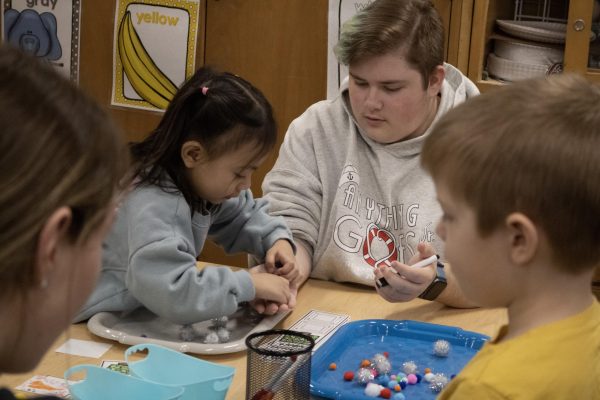South reflects on school energy use, sees impact on environment
April 11, 2018
How many times a day does one leave a light on when leaving a room? And then how many times do they go back to turn it off? Now think about the entire school of Glenbrook South. Imagine how many lights get left on all the time. How much energy could students and staff save if they turned off their classroom lights once in a while? This is just one example of ways people here at GBS can be conscious of how much energy they use.
Casey Wright, associate principal for administrative services, believes that students and staff could be more energy conscious. According to Wright, although most teachers turn off the lights before they leave their classrooms, no one is doing as much as they could be to conserve energy.
According to senior Kate Voss, she believes that people take advantage of the resources they have and neglect to conserve materials.
“People tend to take advantage of the resources we have, including food waste, paper, plastic waste, and recycling,” Voss said.
Senior George Wood is also very concerned about the amount of energy that is wasted both at South and in the rest of his community.
“The amount of energy we use directly affects our environment, even if you waste small amounts of energy each day, it adds up to a lot of energy waste over time,” Wood said.
According to Brian Murdy, the plant operations director, there is a direct relationship between an institution’s size and the maximum quantity of energy it can save. He says that as the facility’s size increases, so does the quantity of conservable energy.
“We’re constantly trying to use less and less energy,” Murphy said. “The majority of that has probably been retrofitting fixtures from fluorescent, or HID lights, to LED.”
South has been transitioning to more energy-conserving lights. According to Murdy, the most recent large-scale project they’ve done has been redoing the parking lot lights. Each lightbulb was 400 watts, and they were replaced with much cleaner LED 100 watt lights.
“Once you start getting into the newer stuff, you’re not getting the bigger gains,” Murdy said. “As time goes on it gets a little more difficult to see those big gains.”
According to Wright, the hallway lights are being replaced by newer, more innovative varieties with motion sensors that turn off if they don’t sense movement for a certain amount of time. Wright says the same changes have been happening with vending machines and some classrooms.
“We’re as conservative as we can be,” Murdy said. “Just before the school year we added a bunch of those hallway lights. We keep adding to it, more and more areas.”
According to Voss, she is going to major in food systems and sustainable agriculture in college next year. She says she is very passionate about conserving energy and the environment.
“People don’t realize how much more they could be doing,” Voss said. “They say, ‘Oh I recycle, I take short showers, isn’t that enough?’ But there’s really so much more that they could be doing.”
According to Wood, he plans to study Environmental Studies in college next year; he cares about energy use because of how it affects the environment and everything in it.
“I seriously believe that at least 75 percent of the student body does not care enough about the environment to change their ways,” Wood said. “In my experience, people are sadly pretty resigned to the fact that the Earth is dying, so they’d rather be comfortable…than change their routine slightly to conserve energy.”













